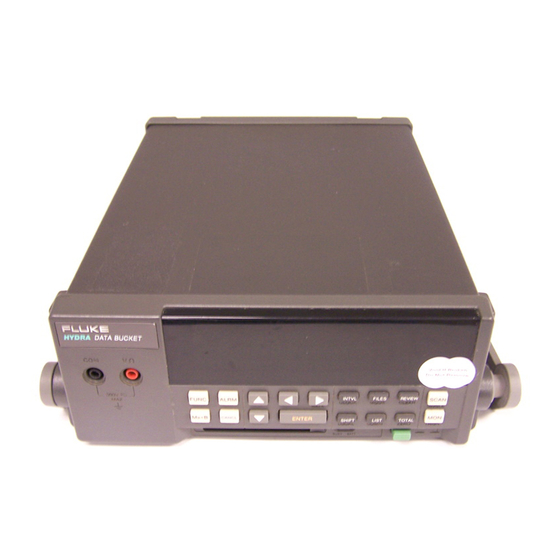
Fluke Hydra Series II Manuals
Manuals and User Guides for Fluke Hydra Series II. We have 2 Fluke Hydra Series II manuals available for free PDF download: User Manual
Fluke Hydra Series II User Manual (268 pages)
Data Bucket
Brand: Fluke
|
Category: Test Equipment
|
Size: 1 MB
Table of Contents
-
-
Introduction31
-
-
Chapter 1
31 -
Chapter 2
56 -
Chapter 3
91-
Setup Files92
-
Data Files92
-
-
Using Data Open100
-
Using Data Erase101
-
-
Chapter 4
107-
-
Status Registers118
-
Chapter 5
173 -
Modem Operations
181 -
Chapter 6
183 -
Maintenance
189 -
Chapter 7
191-
Introduction191
-
Cleaning191
-
Line Fuse191
-
-
Calibration209
-
Service210
-
-
Appendices
211-
A Specifications213
-
-
Appendix
213-
Specifications213
-
RS-232 Cabling243
-
Advertisement
Fluke Hydra Series II User Manual (197 pages)
Hydra Series II Data Acquisition Unit, Hydra Series II Data Logger
Brand: Fluke
|
Category: Measuring Instruments
|
Size: 0 MB
Table of Contents
-
Introduction
19 -
Overview
25 -
Chapter 2
27-
Front Panel29
-
Left Display30
-
Annunciators30
-
Rear View32
-
Review Array41
-
-
Resistance49
-
Frequency49
-
-
-
Alarm Limits51
-
-
-
-
Totalizing64
-
Connections64
-
General64
-
-
Review Array64
-
-
Review Array65
-
-
Introduction73
-
-
Chapter 4
73-
RS-232 Setup74
-
-
-
-
Chapter 5
119-
Introduction119
-
Measurement Rate119
-
-
Maintenance
129 -
Chapter 6
131-
Introduction131
-
Cleaning131
-
Line Fuse131
-
-
-
Totalizer Test145
-
-
Calibration149
-
-
Switch Power on149
-
Service150
-
-
-
Appendices
151-
Response Times153
-
-
Appendix
153-
Specifications153
-
A Specifications153
-
RTD Inputs157
-
Input Protection161
-
Frequency Inputs162
-
Frequency Range162
-
Digital Inputs164
-
Trigger Input165
-
E-3. Example186
-
F RS-232 Cabling187
-
RS-232 Cabling187
-
-
Advertisement

